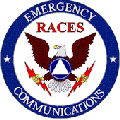

Jefferson County Emergency Plan
1 Introduction
This plan is provided as guidance for the members of Jefferson County ARES/RACES by the Emergency Plan Committee, appointed 1 December 2001 by the Jefferson County ARES Emergency Coordinator. The plan will be in effect from the date of publication until modified
2 Purpose
The purpose of this plan is to effectively and efficiently mobilize the members of Jefferson County ARES/RACES in times of communications emergency, when their services may be needed by Jefferson County Department of Emergency Management. This plan will be tested at least four times per year in an exercise specifically designed for this test. The test will consist of unannounced activation of the telephone tree, appointment of a Net Control Operator, and an actual check-in procedure of all available hams. During tests only, all communications shall be preceded and ended with the statement “This is a drill” to prevent non-members who are monitoring from undue alarm.
3 Activating the Plan
This plan may be activated for drills by the ARES Emergency Coordinator of Jefferson County. In the event of an actual emergency, this plan may be implemented by any of the following:
• The Emergency Management Director or his designee.
• The Sheriff.
• The County Administrator.
• A member of the County Board.
If individual members perceive anything which they feel may be a cause for the implementation of the plan, the plan may be self –activated to the extent that members should check into the Jefferson County Emergency Net on the Port Townsend Repeater on 145.15 MHz. for instructions.
4 ARES Mobilization Procedure
Upon activation, all ARES/RACES members will be notified by the Jefferson County Emergin Integrated Event Notification System© or, in the event of a system malfunction, by the current Telephone Tree which is shown on the roster. Members, notified of an emergency should check into the Jefferson County Emergency Net. The first member to check into the net will become net control until the task is handed of to someone else. The first member to check into the net who has been trained on EOC operations should be assigned to the EOC. The first duly designated member to arrive at the EOC will start a net and log as NCS on the 145.15 MHz repeater, taking check-ins from those members available. If required, the second member to arrive will take over logging duties. All members will check in and stand by for further instructions. The NCS will provide them with brief, guarded information concerning the emergency, as it becomes available.
Members should be aware that phone lines may be down in some emergencies, and should always begin to monitor the 145.15MHz repeater during unusual conditions such as severe weather events and other events that they might monitor KIRO radio on 710 KHz. or national news broadcasts. In the event of a repeater failure we will use 145.15 MHz simplex with a PL code of 114.8 Hz. From this frequency, simplex frequencies of 144.90 MHz. (no PL) or 147.44 (no PL) may be assigned for operation.
Members who have HF privileges should also monitor the Washington State Emergency Net (WSEN) on 3985 KHz.
5 Duties of the NCS
The NCS shall be responsible for activating a directed net on the repeater. In the event the repeater is down, the NCS shall activate on 145.15 MHz simplex, taking check-ins by relay if necessary. The NCS will start a log of all check-ins and messages passed during the event, and will maintain the log until logging duties can be taken over by a second responding member. The NCS will maintain absolute control of the net during emergencies or drills, and all members are reminded of this control. After the check-in procedure is complete, the NCS will pass such messages. If hams are deployed in the field, as during severe weather events, the NCS shall do safety status checks during lulls in communications, to insure the safety of all deployed members. Members are reminded that they must request permission to leave a net, even for a short time, so that safety status checks will not show them as missing.
6 Operations
All third party messages (for example, a message from the City Command Post to the Emergency Manager) will be written, using a Jefferson County Messsage Form 213. If the client message form is not numbered, the operator will assign a number consisting of the month, day, 24 hour time. For example on the 11th of August at 2:14 p.m. - the number assigned would be 08111414.
7 Drills, Tests, Training, and Alerts
As outlined in Section 2, above, tests of this activation plan will occur four times per year. General training of the Jefferson County ARES/RACES membership will occur at each monthly meeting, according to a schedule prepared by the EC for Training. Weekly nets will be held on the Port Townsend repeater.
All members are required to be familiar with their equipment so they can quickly and accurately set up operations on another frequency and CCTCS tone.
Field Day in June is an official ARES/RACES training event and should be attended by all members whose schedules permit. Other tests and drills may be scheduled by the EC, in consultation the Emergency Manager. All members are encouraged and urged to take additional training on the Internet, in the ARRL Amateur Radio Emergency Communications Course or courses offered by FEMA.
To download a Microsoft Word version of the Jefferson County Emergency Plan - Click Here
To download a pdf version of the Jefferson County Emergency Plan - Click Here
See the forms and info page for the Washington State RACES Plan.